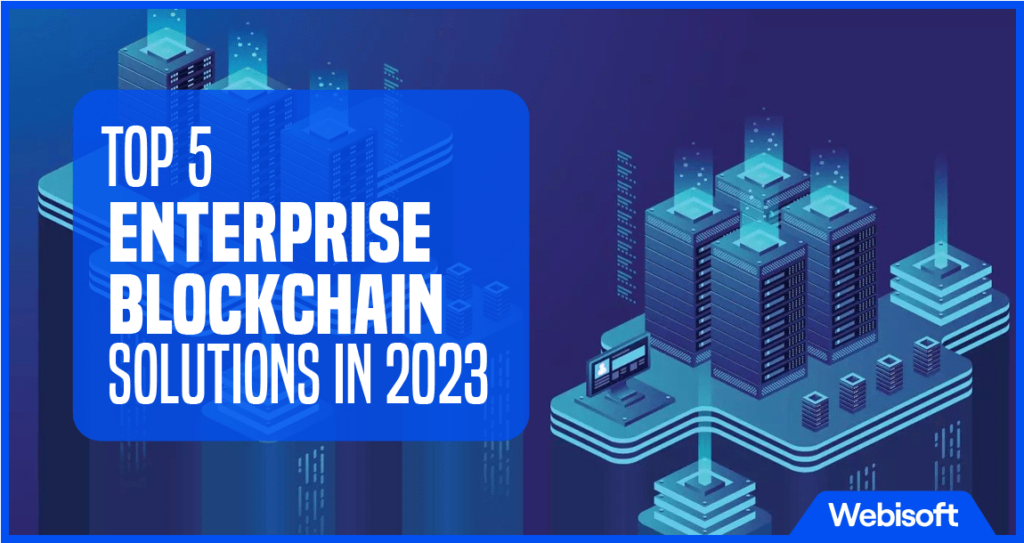Blockchain is a revolutionary technology that transformed practically every sector, including banking, healthcare, supply chain and many more.
Blockchain has shown to be the finest and the most efficient technology in the search for handling data more securely and discreetly. As tests continue with Blockchain technology, many additional potentials are becoming found.
The rising numbers of Blockchain platforms contribute to supporting and speeding the development of blockchain-based platforms. Businesses have noticed the requirement and have begun to explore the potential of Blockchain by building unique Blockchain apps.
Contents
- 1 The 5 Best Blockchain Solutions for Businesses
- 2 Get Your Custom Blockchain Solution Today!
- 3 What Is A Blockchain Development Platform?
- 4 Find a Solution with Webisoft
The 5 Best Blockchain Solutions for Businesses
We’ve compiled a list of the five most prominent Blockchain solutions:
- XDC Network
- R3 Corda
- Hyperledger Fabric
- Hedera Hashgraph
- Quorum
Here’s a table among XDC Network, R3 Corda, Hyperledger Fabric, Hedera Hashgraph, and Quorum based on consensus algorithm, smart contracts, currency, operation mode, and governance:
| Platform | Consensus Algorithm | Smart contracts | Currency | Operation mode | Scalability | Industry Focus | governance |
| XDC Network | Delegated Proof of Stake (DPoS) | yes | XDC | Public & Private | High | Cross-industry | XDC Foundation |
| R3 Corda | Pluggable Consensus | yes | Corda Token (Optional) | Private | High | Financial, Banking, and Trade | R3 Consortium |
| Hyperledger Fabric | Pluggable Consensus | yes | None (Flexible) | Private | High | Cross-industry | Linux Foundation |
| Hedera Hashgraph | Hashgraph Consensus | yes | HBAR | Public & Private | High | Cross-industry | Hedera Governing Council |
| Quorum | Raft Consensus | yes | Ether (Ethereum) | Private | Medium | Financial, Banking, and Trade | J.P. Morgan / Ethereum Mainnet |
Get Your Custom Blockchain Solution Today!
Speak with Webisoft’s experts to build your scalable enterprise blockchain application.
1. XDC Network Blockchain platform
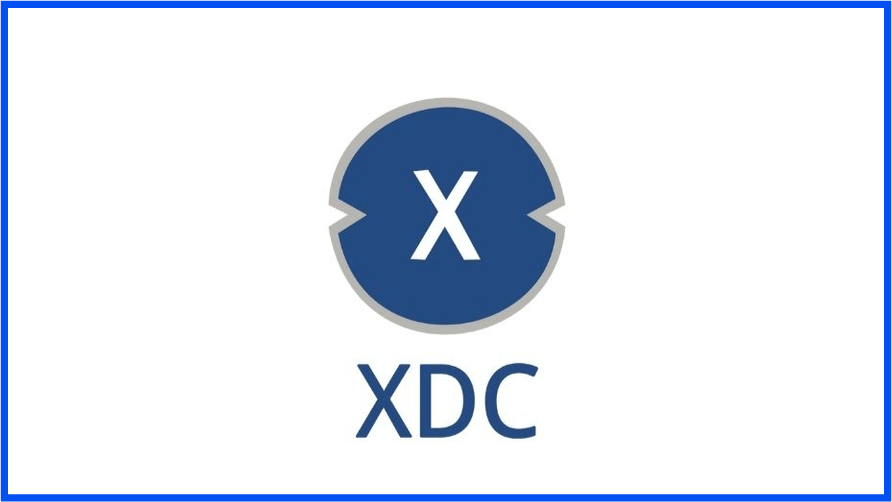
XDC Network is a blockchain platform designed for enterprise use cases, with a focus on scalability, speed, and interoperability.
It is built on the XinFin Hybrid Blockchain, which combines elements of both public and private blockchains to provide a high-performance and secure environment for decentralized applications.
Here are some key features and aspects of XDC Network:
Consensus Mechanism
XDC Network uses a delegated proof-of-stake (DPoS) consensus algorithm. DPoS allows for fast block confirmation times and efficient block production by a set of trusted block producers, known as validators.
Scalability and Speed
XDC Network is designed to handle a high throughput of transactions per second (TPS), enabling fast and scalable blockchain solutions.
It leverages a parallel multi-chain architecture to increase performance and throughput.
Interoperability
XDC Network aims to facilitate interoperability between different blockchain networks.
It supports cross-chain transactions and integration with other networks, enabling seamless transfer of assets and data across multiple platforms.
Smart Contracts
XDC Network supports smart contracts written in Solidity, the same programming language used in Ethereum.
Developers can create and deploy smart contracts on the XDC Network, enabling the execution of automated, self-executing agreements.
XDC Token
The XDC token is the native cryptocurrency of the XDC Network. It serves as a utility token used for transaction fees, staking, and participating in network governance.
Governance
The XDC Network operates under the governance of the XDC Foundation, a non-profit organisation responsible for the development, promotion, and governance of the network.
The foundation oversees the decision-making process and ensures the growth and sustainability of the network.
Enterprise-Focused Solutions
XDC Network is tailored for enterprise use cases, particularly in sectors such as trade finance, supply chain management, and cross-border transactions. It aims to provide efficient, transparent, and secure solutions for businesses.
2. R3 Corda Blockchain Platform
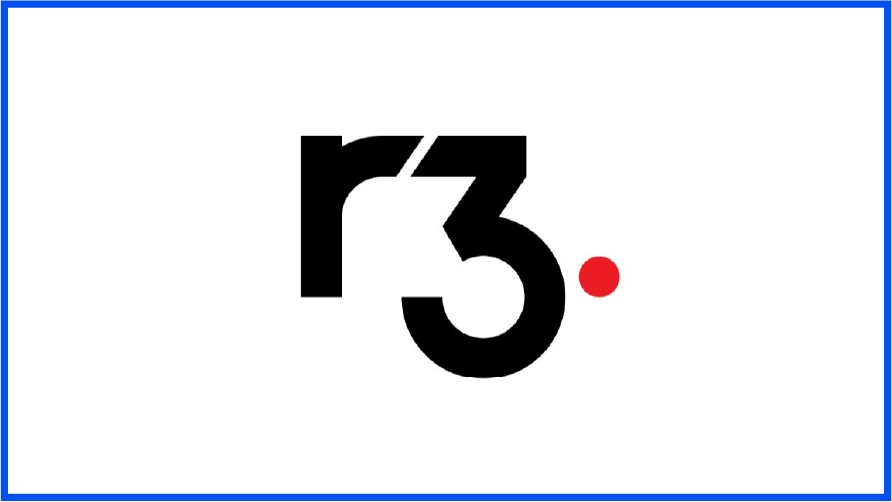
R3 Corda is a blockchain platform developed by R3, a consortium of financial institutions and technology companies. It is specifically designed for enterprise use cases, particularly in the financial, banking, and trade sectors.
Corda aims to provide a secure, scalable, and privacy-focused environment for building decentralized applications (dApps) and facilitating trusted transactions between participants.
Here are some key aspects and features of R3 Corda:
Privacy and Security
Corda places a strong emphasis on privacy. It enables direct transactions between parties without broadcasting sensitive data to the entire network.
Each transaction is shared only with the relevant participants, ensuring confidentiality. Corda also employs cryptographic techniques to guarantee the integrity and authenticity of data.
Pluggable Consensus
Corda allows for pluggable consensus, which means that participants in a Corda network can choose their preferred consensus mechanism.
This flexibility enables the customization of consensus algorithms to fit the specific requirements of the use case and the participants involved.
Smart Contracts
Corda supports the development and execution of smart contracts. These smart contracts are written in various programming languages, including Java and Kotlin, and they facilitate the automation of business agreements and processes.
Corda’s smart contracts are called “CorDapps” (Corda Distributed Applications).
Network Membership and Identity
Corda focuses on ensuring that participants on the network have known identities and established relationships.
It allows for fine-grained access control, enabling parties to transact and share data only with authorized counterparts. This feature is especially relevant in regulated industries such as finance.
Interoperability
Corda is designed to facilitate interoperability with existing systems and networks.
It provides integration capabilities to connect with legacy systems, databases, and other blockchain networks, enabling seamless information exchange and interoperability across platforms.
Corda Network
Corda offers the Corda Network, a global, permissioned network that connects Corda-based ecosystems and participants.
The Corda Network provides a common infrastructure and standards for collaboration, trust, and communication between Corda users.
Governance
R3 Corda operates under the governance of the R3 consortium, which includes members from various industries and sectors.
The governance model involves collaboration, decision-making, and contributions from the consortium members.
R3 Corda is widely used by financial institutions, trade organizations, and other enterprises seeking to leverage blockchain technology for secure and efficient transactions, data sharing, and automation of business processes.
It provides a framework for building decentralized applications with a focus on privacy, security, and interoperability.
3. Hyperledger Fabric Blockchain Platform
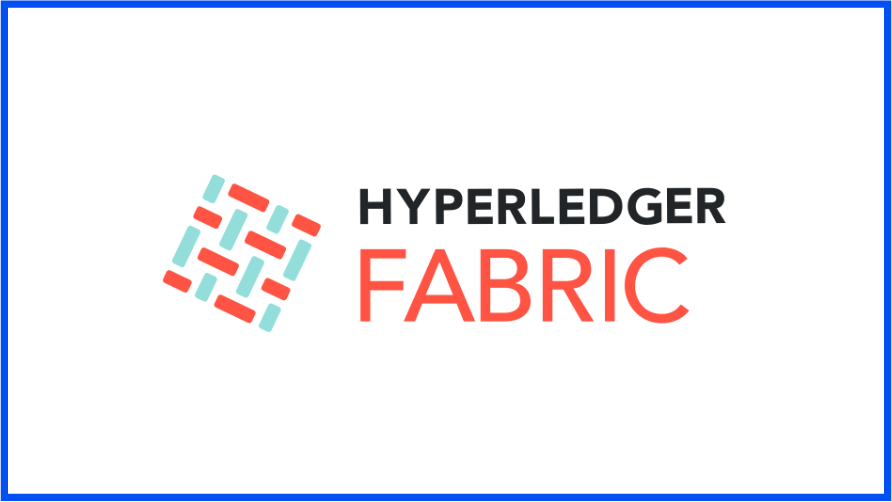
Hyperledger Fabric is an open-source blockchain platform and framework developed under the Linux Foundation’s Hyperledger project.
It is specifically designed for enterprise use cases, providing a modular architecture that allows organizations to build and deploy private, permissioned blockchain networks.
Here are some key aspects and features of Hyperledger Fabric:
Permissioned Network
Hyperledger Fabric supports private, permissioned networks, where participants are known and authenticated.
This design is well-suited for enterprise applications that require confidentiality, scalability, and control over access and data sharing.
Modularity and Scalability
Fabric’s modular architecture allows for flexibility and scalability. It separates key components, such as consensus, membership services, and smart contracts, into independent modules.
This modularity enables organizations to tailor the platform to their specific needs, facilitating scalability and ease of maintenance.
Consensus Mechanisms
Hyperledger Fabric offers pluggable consensus, allowing participants to choose their preferred consensus algorithm. The platform supports various consensus protocols, including practical Byzantine fault tolerance (PBFT), Raft, and others.
This flexibility enables customization based on the desired network characteristics and trust model.
Smart Contracts
Fabric uses a unique approach to smart contracts, called chaincode. Chaincode is written in programming languages such as Go, JavaScript, and Java.
It allows organizations to define and execute business logic in a secure and isolated environment, providing flexibility and interoperability.
Privacy and Confidentiality
Hyperledger Fabric provides channels, a feature that enables the creation of private sub-networks within a larger Fabric network. Channels allow for selective data sharing, ensuring that only participants with the necessary permissions can access specific transactions and data.
Identity and Membership Services
Fabric integrates with existing identity management systems, enabling seamless integration with enterprise identity providers.
It supports different membership services and identity solutions, such as public key infrastructure (PKI), to authenticate network participants and manage access control.
Governance and Collaboration
Hyperledger Fabric is governed by the Linux Foundation and operates under an open-source community model.
It encourages collaboration, contributions, and decision-making from a diverse range of stakeholders, fostering innovation and collective governance.
Hyperledger Fabric is widely used in various industries, including finance, supply chain, healthcare, and more, to develop robust, scalable, and secure blockchain applications.
Its focus on privacy, modular design, and enterprise-grade features make it an attractive choice for organizations seeking to implement blockchain solutions.
4. Hedera Hashgraph Blockchain Platform
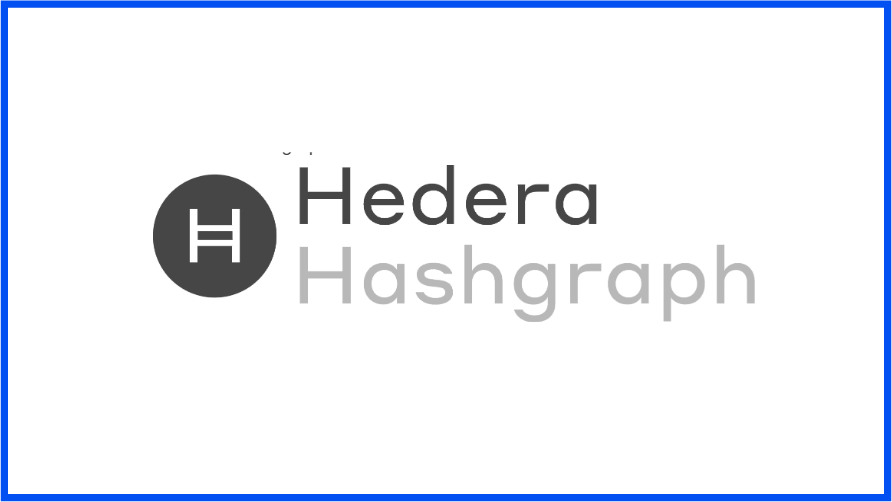
Hedera Hashgraph is a blockchain-inspired distributed ledger technology (DLT) platform. While it shares some similarities with traditional blockchains, it employs a unique consensus algorithm and data structure known as the Hashgraph.
Here are some key points about Hedera Hashgraph in the context of blockchain technology:
Consensus Algorithm
Hedera Hashgraph uses a consensus algorithm called the hashgraph consensus algorithm.
It is a variant of the gossip protocol, combined with virtual voting, that allows participants to achieve consensus on the order and validity of transactions without relying on a traditional proof-of-work (PoW) or proof-of-stake (PoS) mechanism.
Directed Acyclic Graph (DAG)
Hedera Hashgraph employs a directed acyclic graph (DAG) data structure to organize and store transactions.
In a DAG, transactions are linked together in a graph-like structure rather than being organized into linear blocks as in a traditional blockchain. This design allows for parallelism and potentially higher throughput.
Speed and Scalability
Hedera Hashgraph aims to provide high transaction throughput and low latency. The combination of the hashgraph consensus algorithm and the DAG structure enables fast confirmation times and the potential for high scalability.
Security Solution
Hedera Hashgraph places a strong emphasis on security. The consensus algorithm achieves Byzantine fault tolerance (BFT), meaning that it can withstand attacks and malicious behaviour from a portion of the network participants.
Additionally, Hashgraph uses cryptographic techniques to ensure the integrity and authenticity of transactions.
Governance and Council
Hedera Hashgraph operates under a governance model that involves the Hedera Governing Council, a group of leading organizations from different industries.
The Council oversees the platform’s development, maintenance, and decision-making processes, aiming to provide a fair and transparent governance structure.
Public and Permissioned Network
Hedera Hashgraph offers both a public manner and the option for private, permissioned networks.
The public manner allows anyone to participate and use the network, while the permissioned network option provides additional control and privacy for enterprise use cases.
Tokenization and Smart Contracts
Hedera Hashgraph supports the creation and management of tokens on its platform. It provides a framework for issuing, transferring, and tracking digital assets.
Additionally, Hedera Hashgraph supports the deployment and execution of smart contracts using Solidity, similar to Ethereum.
Hedera Hashgraph aims to provide a fast, secure, and scalable infrastructure for decentralized applications, token economies, and enterprise use cases.
It introduces novel consensus and data structure concepts that differentiate it from traditional blockchains, offering potential advantages in terms of speed, scalability, and security.
5. Quorum Blockchain Platform
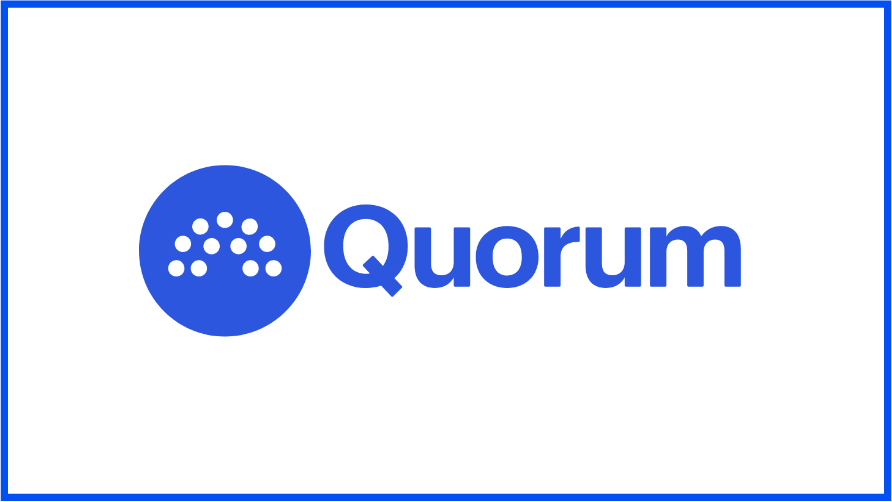
Quorum is an open-source blockchain platform developed by J.P. Morgan. It is designed for enterprise use cases and specifically targets applications within the financial industry.
Quorum is built on the Ethereum blockchain technology, but it includes modifications and enhancements to address the specific requirements of private, permissioned networks.
Here are some key aspects and features of Quorum:
Privacy and Confidentiality
Quorum prioritizes privacy and confidentiality for transactions and data. It introduces features such as private transactions, which allow for the selective sharing of sensitive information among specific network participants.
This is achieved through the use of confidential contracts and the integration of a privacy layer.
Permissioned Network
Quorum supports permissioned networks, where participants are known and have explicit access rights to join the network.
This design is particularly useful for enterprise use cases, as it allows for controlled access, privacy, and data sharing within a trusted environment.
Consensus Mechanism
Quorum offers multiple consensus mechanisms to choose from, including the standard Ethereum proof-of-work (PoW) consensus and a permissioned version of the Raft consensus algorithm.
These consensus options provide flexibility for different use cases, balancing factors such as performance, security, and energy efficiency.
Smart Contracts
Quorum supports smart contracts written in Solidity, the same programming language used in Ethereum.
This allows developers to leverage existing Ethereum tooling and deploy smart contracts on the Quorum platform. Smart contracts enable the automation and execution of predefined business logic.
Enterprise Integration
Quorum includes features and capabilities that facilitate integration with existing enterprise systems.
It provides application programming interfaces (APIs) and tools for seamless integration with databases, identity management systems, and other enterprise software.
This enables enterprises to leverage their existing infrastructure while incorporating blockchain capabilities.
Privacy Management
Quorum incorporates a privacy management framework that allows participants to define and manage data access controls.
This feature gives organizations the ability to control and restrict access to sensitive information based on predefined policies and permissions. Which gives the solution to any privacy-related problem.
Governance
Quorum follows a collaborative governance model, allowing multiple organizations and stakeholders to contribute to the platform’s development and decision-making.
The Quorum ecosystem includes a community of developers and enterprises working together to enhance the platform.
Quorum has been widely adopted by various financial institutions and enterprises for use cases such as trade finance, supply chain management, asset tokenization, and more.
Its focus on privacy, permissioned networks, and enterprise integration makes it suitable for applications requiring a balance between confidentiality, scalability, and regulatory compliance.
What Is A Blockchain Development Platform?
A blockchain platform is a software framework or infrastructure that allows developers to build, deploy, and manage blockchain-based applications and systems.
It provides the necessary tools, protocols, and functionalities to create and operate a blockchain network. A blockchain platform typically includes the following key components:
1. Blockchain Protocol
The platform implements a specific blockchain protocol or framework. It defines the rules, data structure, and consensus mechanism of the blockchain network. Common protocols include Ethereum, Hyperledger Fabric, Corda, and others.
2. Consensus Mechanism
The platform incorporates a consensus algorithm that enables network participants to agree on the validity and order of transactions.
Consensus mechanisms, such as proof of work (PoW), proof of stake (PoS), or other variants, ensure the security and integrity of the blockchain.
3. Smart Contracts
Smart contracts are self-executing agreements or programs that run on the blockchain. The platform provides tools and frameworks for developing, deploying, and executing smart contracts.
Smart contracts enable the automated and trustless execution of predefined actions based on predefined conditions.
4. Network Infrastructure
A blockchain platform typically includes the infrastructure to deploy and manage the blockchain network.
This infrastructure may include nodes, peers, validators, and other network components necessary for the operation of the blockchain.
5. Development Tools
Blockchain platforms offer development tools, software libraries, and APIs that enable developers to create and interact with the blockchain network.
These tools simplify the process of building decentralised applications (dApps), integrating existing systems, and interacting with smart contracts.
6. Security and Privacy Features
Blockchain platforms implement security measures to protect the blockchain network from attacks and ensure the integrity and immutability of data.
Privacy features may be available to allow for selective disclosure of information and confidentiality of transactions, depending on the platform’s design.
7. Governance Mechanisms
Some blockchain platforms have governance mechanisms in place to make decisions about the evolution, upgrades, and changes to the blockchain network.
Governance models can vary, ranging from community-driven decision-making to more centralized models with designated entities or consortiums.
Blockchain platforms serve as the foundation for creating a wide range of decentralized applications and systems across various industries, including finance, supply chain, healthcare, and more.
They provide the infrastructure and tools necessary to leverage the benefits of blockchain technology, such as transparency, immutability, and trustless interactions.
Find a Solution with Webisoft
The speed of development in enterprise blockchains is lightning-fast, and several Blockchain platforms have emerged with powerful new capabilities.
Enterprises need to learn about and choose the best Blockchain platform among the growing number of options available so they can create highly scalable apps.
We are the go-to enterprise blockchains expert, and our advice has helped many businesses succeed. Our team of Blockchain engineers is well-versed in the technology and has extensive experience creating reliable Blockchain applications.
To Get Enterprise Blockchain Solutions with the top Blockchain professionals of Webisoft if you want us to design such a high-quality Blockchain application for you.
